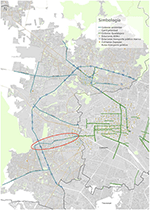Une nouvelle piste de recherche : des linguistes cherchent le lien entre le langage et les arts pariétal et rupestre. Mais l’article original en dit plus sur les capacités cognitives d’Homo Sapiens.
The writing on the wall. Did humans speak through cave art ?"
Citation après traduction :
Une des clés de cette idée est que l’art rupestre est souvent situé dans des « points chauds » acoustiques, où le son résonne fortement, comme certains chercheurs l’ont observé. Ces dessins sont situés dans des parties plus profondes et plus difficiles d’accès des grottes, ce qui indique que l’acoustique était la principale raison de l’emplacement des dessins dans les grottes.
Les dessins, à leur tour, peuvent représenter les sons que les premiers humains ont générés dans ces endroits. Dans le nouveau papier, cette convergence du son et du dessin est ce que les auteurs appellent un « transfert d’information sur la modalité », une convergence de l’information auditive et de l’art visuel qui, selon les auteurs, « permet aux premiers humains d’améliorer leur capacité symbolique. en pensant. » La combinaison des sons et des images est l’une des choses qui caractérisent le langage humain aujourd’hui, avec son aspect symbolique et sa capacité à générer de nouvelles phrases infinies.
Les idées proposées par Miyagawa, Lesure et Nobrega ne font qu’énoncer une hypothèse de travail qui vise à susciter des réflexions supplémentaires sur les origines du langage et à pointer vers de nouvelles questions de recherche.
Les remarques faites juste avant la conclusion de l’article original vont plus loin et sont dans un autre domaine encore plus intéressant :
L’article original : ▻https://www.frontiersin.org/articles/10.3389/fpsyg.2018.00115/full
On y parle en effet de la présence chez Homo Sapiens de POU3F2 qui est un facteur de transcription indispensable pour la différenciation neurale et la génération du système nerveux normal, en particulier l’hypothalamus. Ce facteur ne serait pas présent chez les Neandertaliens et l’Homme de Denisova.
Et de poursuivre :
Comme le note Huijbregts (2017), ce changement pourrait être considéré comme menant à l’acquisition d’un discours complet. Compte tenu de la similitude avec l’art, nous pouvons spéculer avec Huijbregts qu’un changement génétique similaire peut avoir donné lieu à l’apparition de l’art multimodal qui a eu lieu partout dans le monde en même temps que le langage.
Ainsi :
La pensée symbolique qui s’est développée chez les humains a conduit à l’innovation technologique rapide, aux arts visuels sophistiqués, et au langage. Cette capacité cognitive nouvellement formée peut avoir eu un autre résultat inattendu. Après une croissance continue de la taille au cours de la pléistocène, notre cerveau a diminué de taille de 13% au cours des 20 000 dernières années (Hawks, 2011 et ses références). Une explication possible est que la pensée symbolique qui s’est développée chez les humains modernes a conduit à une manière fondamentalement différente de calculer les données, qui n’extrait que l’essentiel de la représentation abstraite au lieu de calculer l’ensemble des données brutes entrantes (Tattersall, 2017). Notre membrane cérébrale est métaboliquement coûteuse, de sorte que l’algorithme nouvellement formé qui nécessite moins de données conduit à l’excrétion de la membrane non nécessaire, entraînant une diminution du cerveau au cours du temps évolutif récent. Notre proposition est que la pensée symbolique omniprésente chez les humains qui a conduit à la diminution du cerveau est illustrée, et était même valorisé, par le CMIT que l’on voit dans la grotte et l’art rupestre de l’Afrique et ailleurs dans le monde et par le développement du langage. Ainsi, contrairement à Wallace, le développement des arts a donné à l’homme moderne un puissant avantage évolutif.
L’article résumé ici : ▻http://news.mit.edu/2018/humans-speak-through-cave-art-0221
et là : ▻https://www.sciencedaily.com/releases/2018/02/180221122923.htm
Les auteurs :
– Shigeru Miyagawa professeur au Department of Linguistics and Philosophy, Massachusetts Institute of Technology, Cambridge, MA, United States.
▻https://loop.frontiersin.org/people/73842/overview
– Cora Lesure, étudiante en doctorat au Département de linguistique du MIT ;
▻https://loop.frontiersin.org/people/523222/overview
– Vitor A. Nobrega, doctorant en linguistique à l’Université de Sao Paulo, au Brésil.
▻https://loop.frontiersin.org/people/202119/overview
#Préhistoire #langage #cerveau #MIT #art_pariétal #art_rupestre #Lesure #Nobrega #Miyagawa































